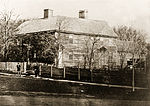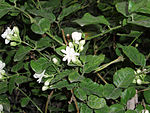Southern Vermont College
1926 establishments in Vermont2019 disestablishments in VermontBuildings and structures in Bennington, VermontCastles in the United StatesDefunct private universities and colleges in Vermont ... and 9 more
Education in Bennington County, VermontEducational institutions disestablished in 2019Historic districts on the National Register of Historic Places in VermontNational Register of Historic Places in Bennington County, VermontNew England Collegiate Conference schoolsSouthern Vermont CollegeTourist attractions in Bennington County, VermontUniversities and colleges established in 1926Use mdy dates from August 2023

Southern Vermont College was a private college on the 371-acre (1.50 km2) former Edward Everett Estate (originally The Orchards) near Bennington, Vermont. The college closed in 2019.
Excerpt from the Wikipedia article Southern Vermont College (License: CC BY-SA 3.0, Authors, Images).Southern Vermont College
Monument Avenue,
Geographical coordinates (GPS) Address External links Nearby Places Show on map
Geographical coordinates (GPS)
| Latitude | Longitude |
|---|---|
| N 42.867777777778 ° | E -73.218611111111 ° |
Address
Southern Vermont College
Monument Avenue
05257
Vermont, United States
Open on Google Maps









